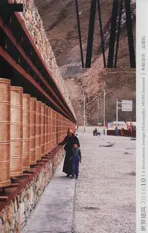蚌埠博物馆及规划档案馆,安徽,中国
2016-11-14孟建民,邢立华,徐昀超等
蚌埠博物馆及规划档案馆,安徽,中国
当前中国各地新城的规划普遍倾向于将文化建筑集群与行政中心并置,试图塑造一个在轴线控制下的政治文化中心,往往导致文化建筑的设计首先要服从政治审美的需求。面对这种矛盾,我们的设计试图在兼顾建筑的中正布局和庄重的政治形象的同时,从中寻找文化建筑的公共性、开放性和亲民性表达。
项目由博物馆和规划兼档案馆两栋建筑组成,总建筑面积约69,000m2。我们首先考虑将平民化的公共活动引入场地,为政治性的中央广场注入活力。建筑主体布置在地块南侧,在北侧完整地退让出一大片城市绿地,在建筑之间置入城市广场,容纳当地大型民间艺术“花鼓灯”的表演以及市民日常的休闲娱乐活动。
两栋建筑统一为方形空间布局,同时采用差异化的设计原则。博物馆形体效仿层岩断面,折叠交错,与玻璃幕墙形成强烈的虚实对比,强调雕塑感和厚重感。规划档案馆的屋面弯曲倾斜,中央矗立圆筒状核心空间,勾勒出独特的建筑轮廓。两个建筑交相辉映,以实对比虚,厚重对比轻盈,历史对比现在,形成一种和谐的对话关系。
博物馆采用回字形的空间布局,并向东侧广场敞开,将活力引入室内,同时广场也成为展览空间的延伸和补充。主入口空间与中庭空间相连,斜撑支柱支撑起36m×36m的井字桁架屋顶,5折的蛇形廊道通过10m左右跨度的拉杆从屋顶悬下,并通过斜拉杆形成超静定结构避免晃动。在光的中庭中,吊桥既是可以漫步的交通空间,又成为一个艺术化的空间雕塑;中庭也不再是空白的视觉空间,而成为一个城市客厅。
规划档案馆由公共性较强的规划馆和相对私密的档案馆组成。设计根据两馆的特性在空间组织上进行了区分。建筑东侧临近城市道路部分为档案馆,为市民提供便捷的公共服务。西侧紧邻广场部分设置规划馆,通高的公共空间连通广场空间,增强建筑的公共性。设计改变传统的沙盘观景模式,以大跨的圆形柱网支撑起铜色圆筒,圆筒下即为规划馆的沙盘区,游客可通过缓缓上升的螺旋坡道从不同角度、不同高度观看城市模型的全貌。
在空间设计中,我们受德勒兹“平滑”理论的启发,试图突破勒·柯布西耶的“漫步建筑”的模式,探索坡道空间叙事的可能,让使用者的参与赋予空间更多的意义。当访客行走在博物馆折叠迂回的坡道和规划档案馆螺旋上升的坡道时,强烈的指向性让线性的叙事模式与连续因果的空间感知转化为一种令人惊叹的心理体验和戏剧性的空间营造。
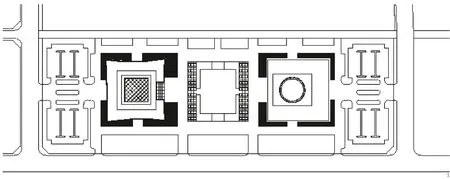
1 总平面/Site plan
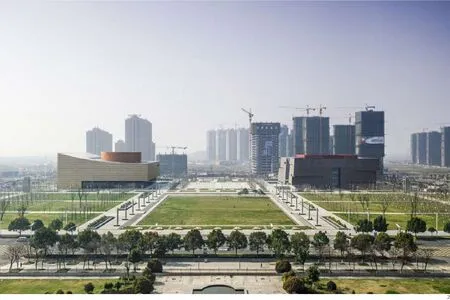
2 鸟瞰/Aerial view
China's contemporary urban planning in various locations currently reflects a general preference for the establishment of cultural architectural designs alongside administrative centers, in an attempt to portray a political and cultural union controlled by a central power. This often leads to such cultural architectural designs prioritizing political aesthetics. Faced with this contradiction, our design aims to retain the central architectural layout and solemn political image,while simultaneously expressing the public nature,openness, and intimacy with people that is typical of cultural architecture.
The project is comprised by two buildings -the Bengbu Museum and the Archive and Planning Exhibition Building, with a total floor area of 69,000m2. We began by allowing for popular public activities within the establishment, to infuse vigor into the politically centered plaza. The main establishment is situated on the southern side,conceding a large parcel of city greenery on the northern side. A park square is positioned between the two buildings, to accommodate large-scale folk arts, such as "flower-drum lantern" performances,and day-to-day recreational activities for the public.
The two buildings share a square-shaped layout, while also reflecting the design principle of differentiation. The architectural design of the museum mimics a cross-sectional stratified rock,which folds and intertwines. This forms a stark contrast with the glass wall, thereby emphasizing the sculptural features and a profound sense of depth. The roof of the Archive and Planning Exhibition Building is curved and tilted, with a cylindrical core space in the center, thus outlining a unique silhouette. The two buildings enhance each other's beauty by contrasting the real with the imaginary, immensity with lightness, and past with present, thereby forming a harmonious dialogic relationship.
The museum employs a homocentric squareshaped layout, which opens to the plaza to the east,inviting vitality indoors. The plaza also serves as a supplement and extension to the exhibition halls. The spaces between the main entrance and the courtyard are connected, the cross-bracing pillars supporting the 36m×36m grid-shaped trussed roof. The five-piece S-shaped gallery is drapedfrom the roof using tension bars of approximately 10m. Rocking movements are avoided by the use of diagonal members to form a statically indeterminable structure. In the empty courtyard,the hanging bridge is an open space for wandering,and also becomes another artistic spatial sculpture;the courtyard is no longer an empty visual space,but an urban living room.
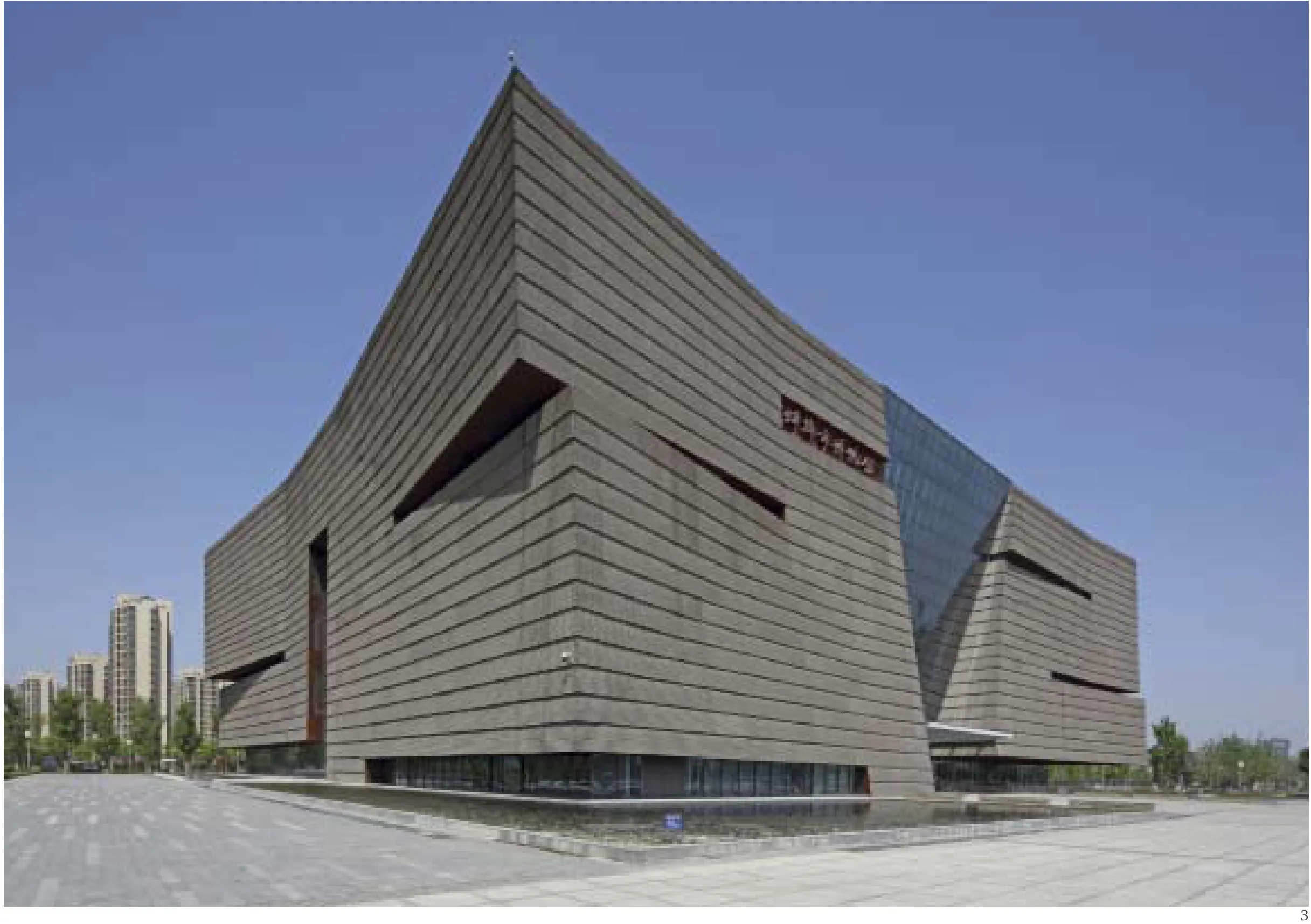
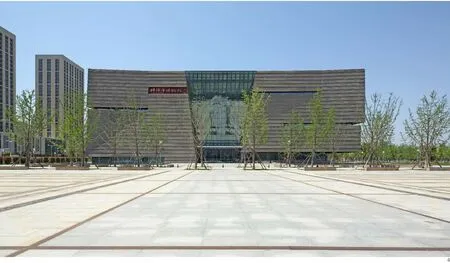


3.4 博物馆外景/Exterior views of the Museum
5 博物馆二层平面/Floor 2 plan of the Museum
6 博物馆首层平面/Floor 1 plan of the Museum
Te Archive and Planning Exhibition Building is composed of a more public Planning and Exhibition House and the comparatively more private Archives House. Te design diferentiates the characteristics of the two houses based on spatial organization. Te east side of the building, which is closer to the city streets, houses the Archives, providing the public with a convenient service. The west side of the structure, which is closer to the plaza, comprises the Planning and Exhibition House. Te high public space is connected to the plaza space, enhancing the public nature of the building. Te design transforms the traditional sandbox panorama. Large, circular column grids support bronze cylinders, with the sandbox area below, such that visitors can use the gradually rising spiral ramp to view different perspectives of the city model from diferent angles.
In terms of spatial design, we were inspired by Deleuze's "Smooth Space" Teory. We aimed to break through Le Corbusier's "architectural promenade" by exploring narration in the ramps, and imparting users with greater meaning for the space through their participation. When visitors walk through the intertwining gallery in the Museum, and the gradually rising spiral ramp of the Archive and Planning Exhibition Building, the strong sense of direction transforms the linear narrative model and continuous spatial layout into a unique psychological experience and a dramatic space.
项目信息/Credits and Data
设计团队/Design Team: 孟建民, 邢立华,徐昀超,周富,李松名,曾智,刘瑞平等/MENG Jianmin, XING Lihua, XU Yunchao, ZHOU Fu, LI Songming, ZENG Zhi, LIU Ruiping, et al.
用地面积/Site Area: 95,499m2
建筑面积/Floor Area: 68,333m2
设计时间/Design Time: 2011
摄影/Photos: 张广源,周富/ZHANG Guangyuan, ZHOU Fu

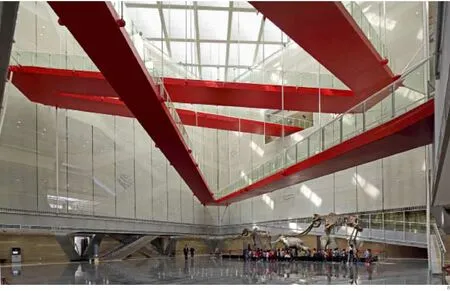
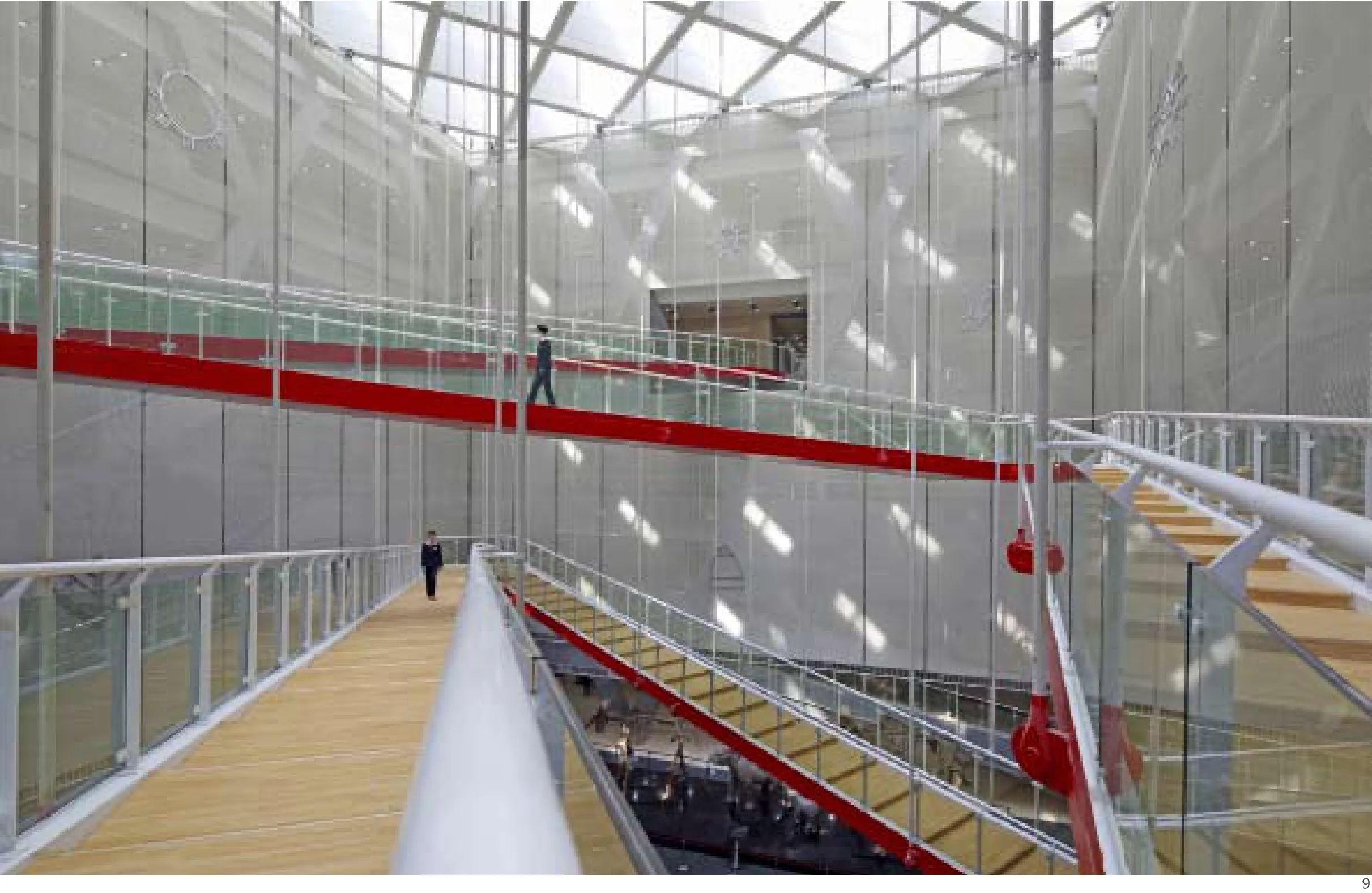
7-9 博物馆内景/Interior views of the Museum
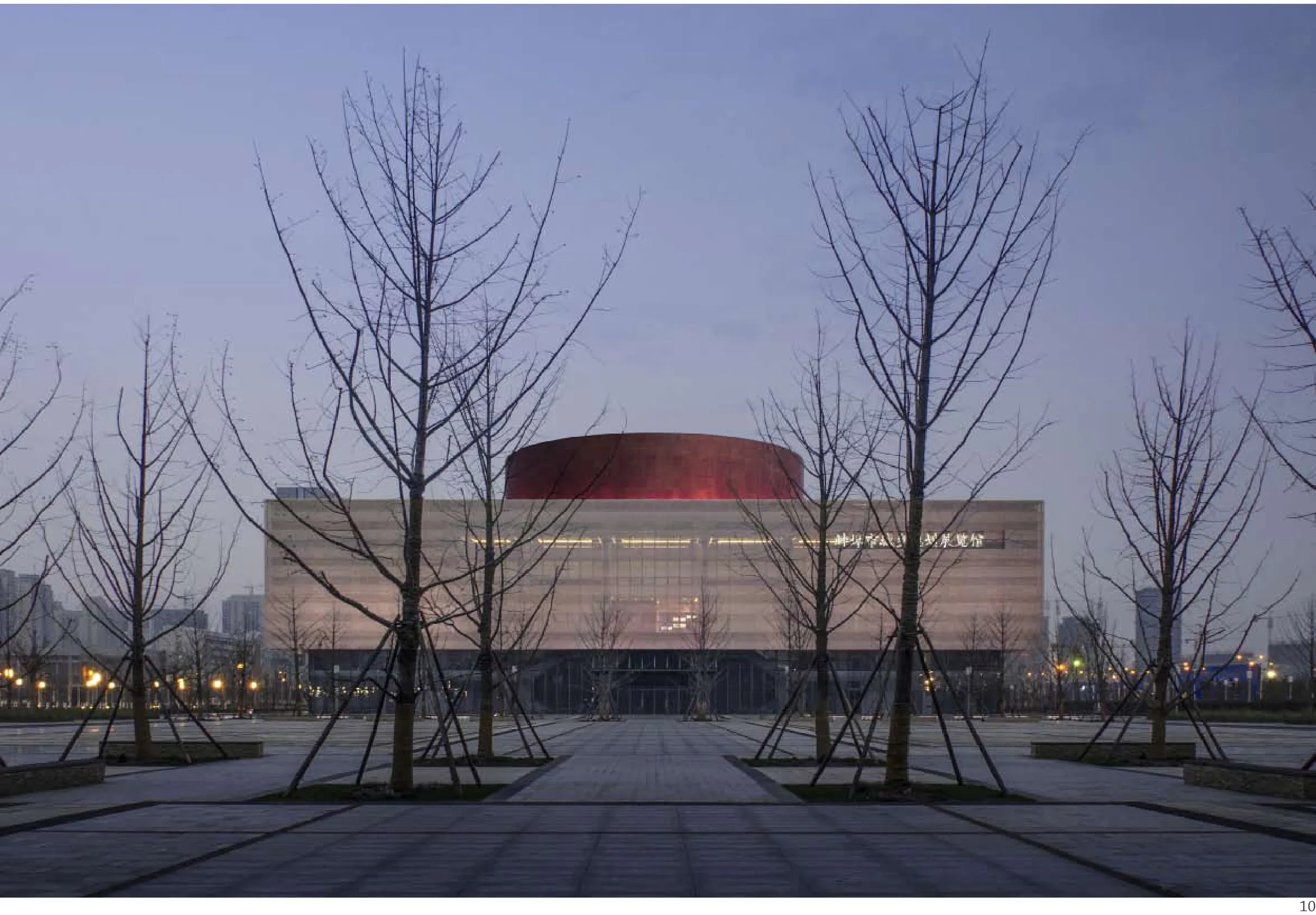
10 博物馆夜景/Night view of the Museum
评论
刘克成:纪念性的解构
方和圆是古今中外纪念性建筑常用的图式。蚌埠市博物馆及规划档案馆设计作为重要的城市公共建筑,城市规划选择方圆为基本图式,左右对称,轴线布局,使环境多了几分庄重,产生了强烈的纪念性意境。
然而在现代社会,博物馆和城市规划档案馆都属于公民的建筑,开放和自由是这个时代的基本特征,也是公民建筑的基本要求。如何平衡城市规划的纪念性与公民建筑的开放性成为了对建筑师最大的挑战。
建筑设计很有趣,建筑师在两个相互对峙的方形体量中,分别植入了一个中庭。在博物馆中是一个透明的方形中庭,设计安置一部非对称的大台阶连接上下,3条悬挂的步道漂浮在空中。中庭虽然是空的,但是却是喧闹的,人是博物馆中最精彩的展品,使博物馆成为一个内部开放的立体广场,纪念性被消解。
规划档案馆则是一个圆形中庭,设计将城市规划模型安置其中,圆筒层层向上,指向天空,象一个巨大的孔洞,连接天与城。一条环形坡道逐步升高,为参观者观看城市模型提供不同视角。中庭虽然有物(城市模型),却是寂静的,城市似乎等待着来自天空的召唤,在中心感很强的空间中制造出一种离散性。
建筑师运用高超的技巧,在一个有着浓郁现代与古典主义气息的城市规划中,创造极具当代气质、开放而丰富的空间。
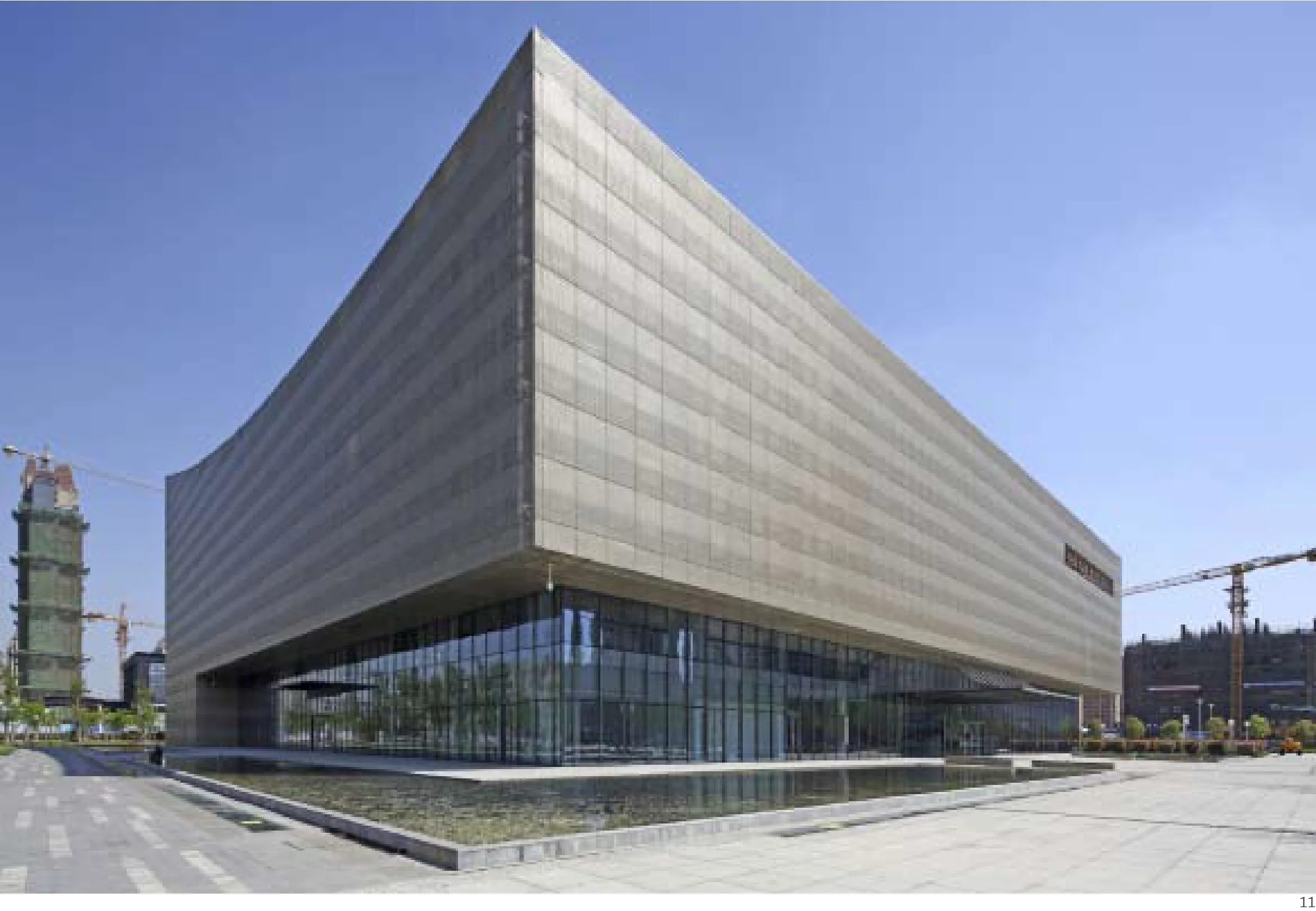
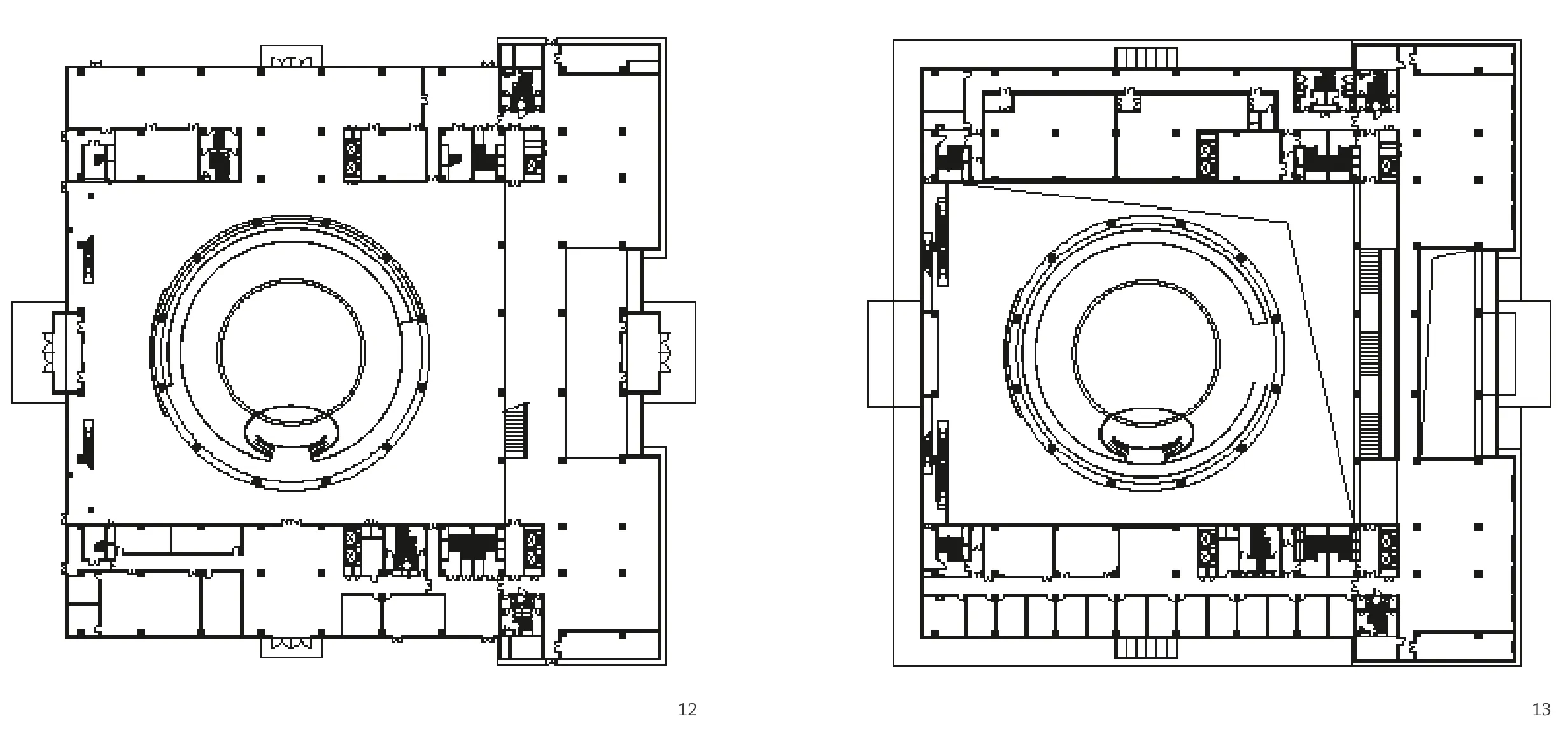
11 规划馆外景/Exterior view of the Archive and Planning Exhibition Building
12 规划馆首层平面/Floor 1 plan of the Archive and Planning Exhibition Building
13 规划馆二层平面/Floor 2 plan of the Archive and Planning Exhibition Building
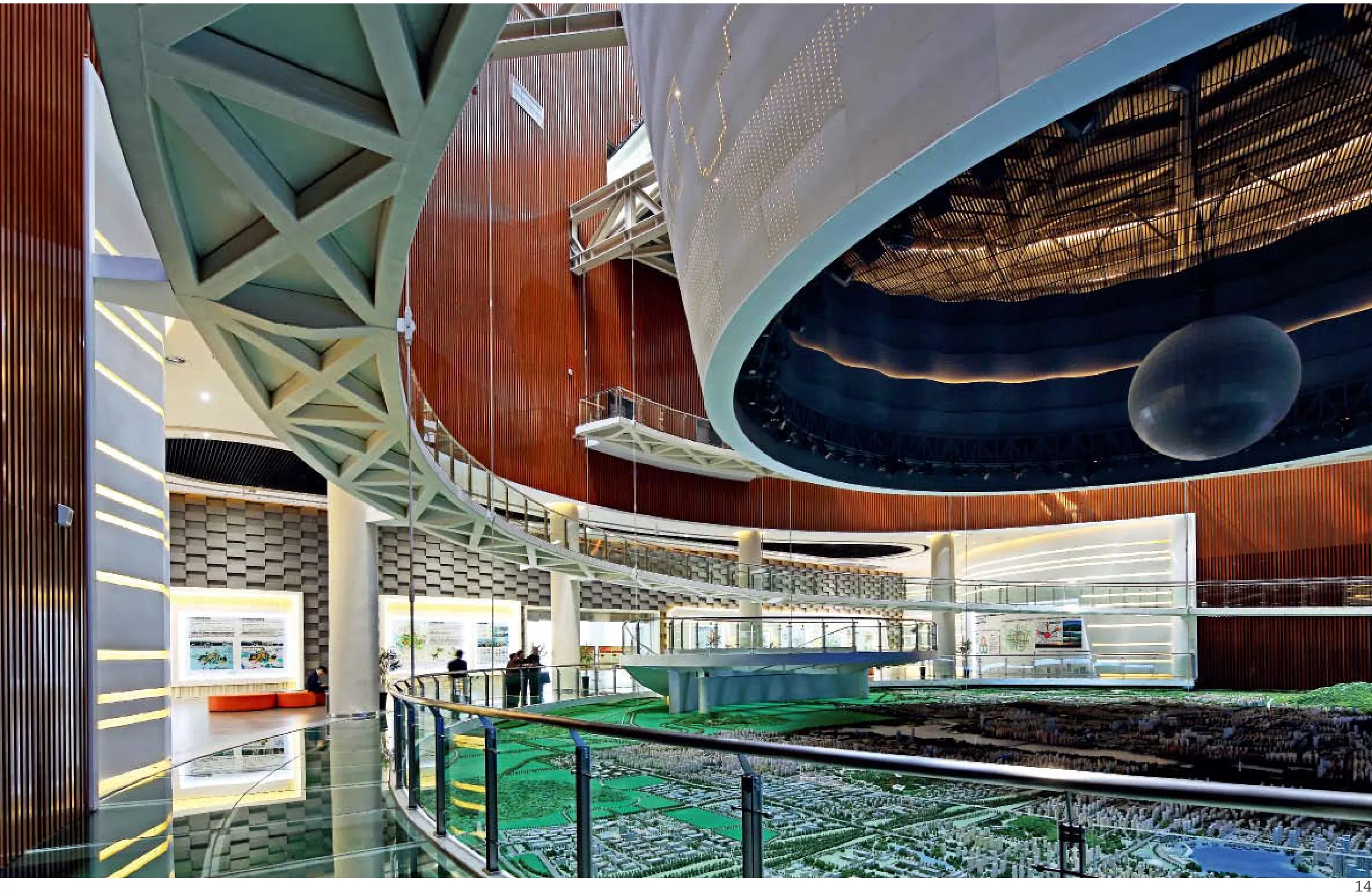
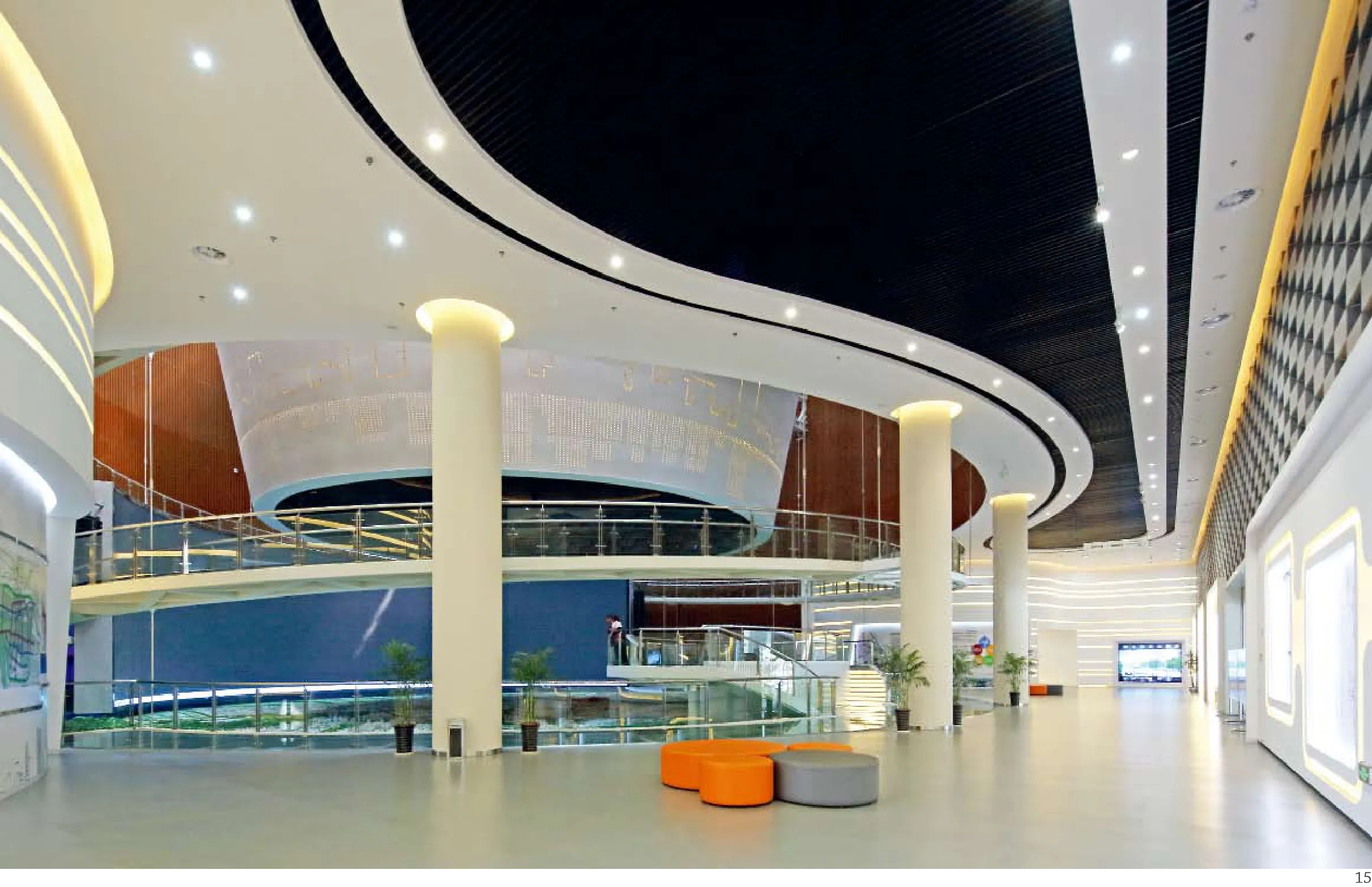
14-16 规划馆内景/Interior views of the Archive and Planning Exhibition Building
Comments
LIU Kecheng:
The Commemorative Decons truction
Square and round shapes are common patterns in commemorative architecture all over the world and at all times. As an important urban public building, the architect of the Bengbu Museum and Archive and Planning Exhibition Building have chosen to primarily employ square and round-shaped layouts, along with bilateral symmetry and an axial layout, which creates an environment of grandeur and a strong sense of monumental signifcance.
However, in modern society, museums as well as urban archive buildings belong in the realms of civil architecture. Openness and liberty are essential characteristics in this age, and are perhaps essential requirements for such buildings. Therefore, how can architects balance the commemorative connotations of urban planning with the openness of civil building has become one of their biggest challenges.
Te architectural design is quite intriguing. In these two square-shaped, opposing buildings, the architect places an atrium within each structure. There is a square-shaped transparent atrium within the museum, where huge asymmetrical stairs connect each floor and three hanging walkways float up high. Although the atrium is empty, it is still vibrant because people become the most marvelous exhibits in the museum,thus turning the museum itself into an interopened stereoscopic square and dissolving the commemorative elements of the building.
Te Archive and Planning Exhibition Building features a cylindrical-shaped atrium where a physical model of the urban city is showcased. Te cylinder of the atrium has been layered upwards,pointing to the sky, like an enormous opening,connecting the sky and the city. Tere is a circular ramp which rises up gradually, providing various viewing angles for audiences to view different perspectives of the city model. Although the atrium is flled with the model, it is quiet because the space possesses a strong sense of centrality creating an environment of discreteness. It seems that the city is waiting for a summoning from the sky.
The architect employed a skilled approach to create a very contemporary style, open and spacious urban planning combines both classical and modern features. (Translated by Dandan Wang)
Bengbu Museum and Archive and Planning Exhibition Building, Anhui, China, 2015
